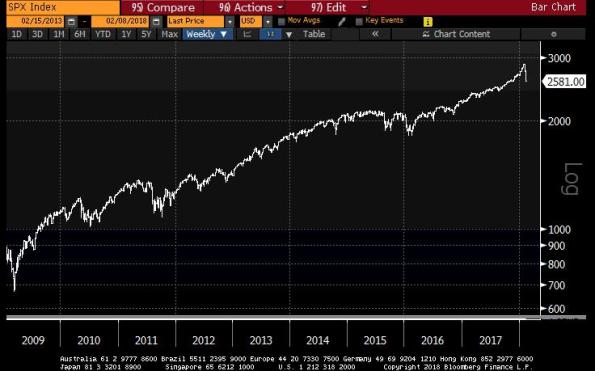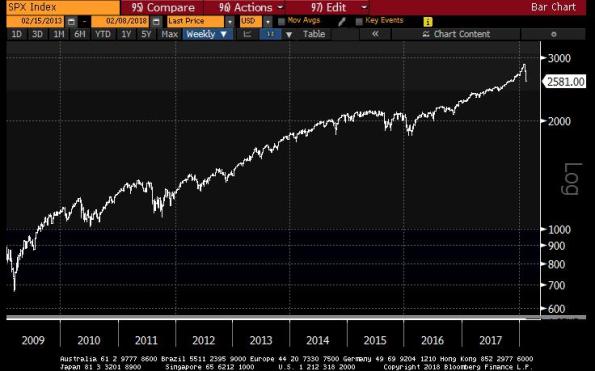A ten percent decline in stocks is not exactly a big deal. Perhaps it feels like a big deal because 10% in one week is somewhat dramatic, but then so is +7% in one month, on top of already-richly-valued markets, in the grand scheme of things. But can we put this in perspective?

Oh dear! How awful!
I pointed out on Monday that saying “nothing has changed in the economy – it’s still strong” is useless pablum if we are entering a bear market. But it’s useful to remember that over a one-week period, literally, almost nothing changes about the backdrop. We have no new information on inflation, not much new information on earnings, not much new on the interest rate cycle. Bob Shiller won a Nobel prize in part for pointing out that market volatility is very much higher than can be explained by changes in underlying fundamentals, so this shouldn’t be a surprise. What does change when the market move is expectations for forward returns. When prices are lower, future expected returns are higher, and vice-versa. (This is why anyone under 40 years old, for whom the lion’s share of their investing life is in front of them, should be totally cheering for a massive market rout: that would imply they have the opportunity to invest at lower prices).
So let’s look at how those forward returns look now, and how they have changed. Of course, we look at these things every day, and every day develop a forecast of expected real returns across a number of asset classes. A subset of these is shown below, for prices as of January 26th: the day of the market high.

On January 26th, our expectations for the annualized 10-year real return for equities was -0.39%. In other words, we expected investors to underperform inflation by about 40bps per year on average over the next decade. 10-year TIPS yields were at 0.57%, and we expected commodity indices to return about 1.57% per annum. So, commodities had an advantage of about 2% per year over equities – plus some inflation-protection beta to boot. Expected commodities returns have been fairly stagnant, actually, because while the indices have rallied (implying lower future spot commodity returns) they have also gotten a push from higher interest rates and carry. (I wrote in mid-January about “Why Commodities Are a Better Bet These Days” and that’s worth reviewing.)












Leave A Comment